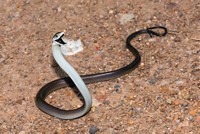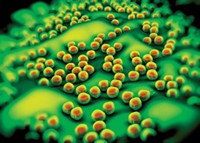Advertisement
Grab your lab coat. Let's get started
Welcome!
Welcome!
Create an account below to get 6 C&EN articles per month, receive newsletters and more - all free.
It seems this is your first time logging in online. Please enter the following information to continue.
As an ACS member you automatically get access to this site. All we need is few more details to create your reading experience.
Not you? Sign in with a different account.
Not you? Sign in with a different account.
ERROR 1
ERROR 1
ERROR 2
ERROR 2
ERROR 2
ERROR 2
ERROR 2
Password and Confirm password must match.
If you have an ACS member number, please enter it here so we can link this account to your membership. (optional)
ERROR 2
ACS values your privacy. By submitting your information, you are gaining access to C&EN and subscribing to our weekly newsletter. We use the information you provide to make your reading experience better, and we will never sell your data to third party members.
Biological Chemistry
Synthetic Antibodies Protect Mice From Sudan Ebolavirus
Infectious Disease: The antibodies are the first step toward treatments for a virus responsible for some past deadly Ebola outbreaks
by Deirdre Lockwood
September 2, 2014

Antibody-based therapeutics hold promise for treating the often deadly hemorrhagic fever caused by Ebola virus. During the current Ebola outbreak in West Africa, which has killed more than 1,500 people to date, several infected people have been treated with an experimental antibody-cocktail treatment called ZMapp. These antibodies are designed to neutralize Zaire ebolavirus, the cause of the current outbreak and the most deadly of the five known species of the virus.
But no antibody-based treatments yet exist for another particularly lethal species, Sudan ebolavirus. It has a 52% fatality rate on average and has caused recurring outbreaks in recent years, including one in Uganda in 2000 that killed 224 people. Now a team of researchers has engineered the first synthetic antibodies compatible with humans that neutralize this species of the virus. The antibodies protect mice from infection and also confer immunity to future exposure to the virus (ACS Chem. Biol. 2014, DOI: 10.1021/cb5006454).
Jonathan R. Lai of Albert Einstein College of Medicine says the work was inspired by a team member’s discovery of a mouse antibody that binds to a glycoprotein on Sudan ebolavirus, interfering with the virus’s ability to infect cells (Nat. Struct. Mol. Biol. 2011, DOI: 10.1038/nsmb.2150). But mouse antibodies are not good candidates for therapeutics, he explains, because the human immune system can reject them, sometimes leading to a toxic inflammatory response. Lai and his collaborators, including Sachdev S. Sidhu of the University of Toronto, wanted to develop a synthetic, human-compatible analog to the mouse antibody.
Fortunately, Sidhu and other colleagues previously had developed a synthetic, human-compatible antibody that was highly similar in sequence and structure to the mouse antibody. To adapt this scaffold for Sudan ebolavirus, Lai and Sidhu’s team then engineered it to contain the binding site of the mouse antibody and generated a phage-display library of 10 billion variants by randomizing certain amino acid residues. Then, they screened the library against the virus and identified several antibodies that bound the target glycoprotein with high specificity.
Collaborators led by John M. Dye at the U.S. Army Medical Research Institute of Infectious Diseases tested two of these antibodies in mice. Researchers first infected the animals with a lethal dose of Sudan ebolavirus. They then gave the animals injections of one of the two antibodies on separate days. As a control, the team treated one group of infected mice with an antibody for Zaire ebolavirus.
All of the mice receiving one of the synthetic Sudan virus antibodies survived for the 30-day experiment. In contrast, 20% of mice given the Zaire virus antibody survived.
The researchers wanted to see if this protective effect persisted. So 35 days later, they exposed the mice that survived the first experiment to Sudan ebolavirus again. All survived, indicating that the antibody treatment conferred a lasting immunity on the mice.
“It’s a cool story,” says Christopher F. Basler, a microbiologist at Mount Sinai Hospital, in New York City, who studies Ebola. The team’s engineering approach is clever and fills a critical need, he says. “Right now the potential therapies for the Sudan virus lag far behind what we have for the Zaire virus.”
The next step is to test the antibodies in nonhuman primates, Lai says. If the antibodies prove to be effective in those models, they could then move to clinical trials, but that’s a long way off, he says.





Join the conversation
Contact the reporter
Submit a Letter to the Editor for publication
Engage with us on Twitter